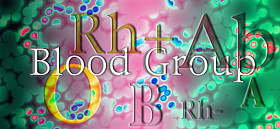 For the first time, researchers have provided conclusive evidence to support the definition of FORS, a new histo-blood group system in humans. The new system is defined by the expression of the Forssman (Fs) antigen on red blood cells, a consequence of a single nucleotide polymorphism in GBGT1, the human Fs synthase gene. Led by Dr. Lola Svensson, the research team studied 2 unrelated individuals with the ABO subgroup Apae, finding that these individuals were homozygous for the common O allele, but strongly expressed Fs glycolipids on their erythrocytes. The expression of Fs was further confirmed using structural, serologic, and flow-cytometry data. Fs glycolipids are normally found only on red blood cells of certain nonprimate mammals and are synthesized by Fs synthase, an enzyme homologous to ABO transferase that is inactive in most humans. Previous work has suggested that the Fs antigen may be a target for a variety of microorganisms and toxins, and that anti-Fs is naturally occurring. As of July 2012, FORS has been recognized by the International Society of Blood Transfusion as the 31st known blood-group system. Further research is needed to better understand the clinical consequences of FORS and to clarify implications for transfusion and transplantation medicine.
For the first time, researchers have provided conclusive evidence to support the definition of FORS, a new histo-blood group system in humans. The new system is defined by the expression of the Forssman (Fs) antigen on red blood cells, a consequence of a single nucleotide polymorphism in GBGT1, the human Fs synthase gene. Led by Dr. Lola Svensson, the research team studied 2 unrelated individuals with the ABO subgroup Apae, finding that these individuals were homozygous for the common O allele, but strongly expressed Fs glycolipids on their erythrocytes. The expression of Fs was further confirmed using structural, serologic, and flow-cytometry data. Fs glycolipids are normally found only on red blood cells of certain nonprimate mammals and are synthesized by Fs synthase, an enzyme homologous to ABO transferase that is inactive in most humans. Previous work has suggested that the Fs antigen may be a target for a variety of microorganisms and toxins, and that anti-Fs is naturally occurring. As of July 2012, FORS has been recognized by the International Society of Blood Transfusion as the 31st known blood-group system. Further research is needed to better understand the clinical consequences of FORS and to clarify implications for transfusion and transplantation medicine.
Reference
